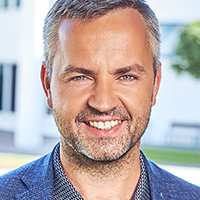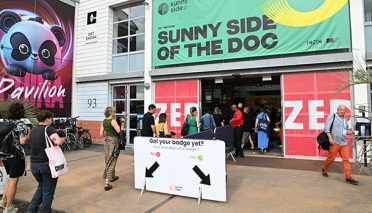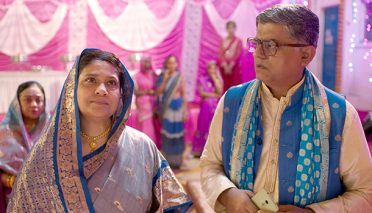Slovakia’s TV Markíza is focusing its content strategy on local, long-running productions and on developing its SVoD platform Voyo, says CEO Peter Gazik.

Peter Gazik
Being the market leader for nearly three decades is no mean feat for any commercial broadcaster in Central and Eastern Europe.
For Slovakia’s Central European Media Enterprises (CME)-owned TV Markíza, which launched in 1996, it has been helped by what CEO Peter Gazik describes as a “transformation, with the clear focus over the last five years being on local production and long-running series.”
He adds that TV Markíza began as a single station and today runs five linear channels. In addition to its flagship, Markíza, these include Doma and Krimi, both of which are aimed at female viewers; male-oriented Dajto; and Klasik.
The latter, which was added to the portfolio in July 2024, “first and foremost brings the best TV productions, predominantly from the late 1980s and beginning of the 1990s, such as Baywatch, The Addams Family and Knight Rider,” says Gazik.
Markíza also operates two web portals, one largely news-based (TVnoviny.sk) and the other more showbiz-oriented (markiza.sk), along with the CME’s pan-regional SVoD platform, Voyo.
Gazik refers to TV Markíza’s main channel as a “fully fledged, all-encompassing” service, with two weekday slots in primetime allocated to The Danube, the channel’s long-running series set just after the Second World War. Gazik describes it as “one example of the heavy focus which we now put on local productions.”
Another locally produced, long-running series is Mama na Prenájom, a fully adapted version of Mom for Rent which is aired at 18.00 before the main evening news. Gazik says it will be substituted by another long-running series in January 2025 called Sl’ub (The Promise). “It is set in the 1980s, so again, targeting an era/period that has been very strong for TV. We believe that the setting and focus will also attract viewership and audiences.”

Long-running drama The Danube is set just after the Second World War
“We try to do a lot of local production, primarily long-running series. We are trying also to go for high-quality adaptations of series from abroad,” he adds. A good example of the latter, which he refers to as “another kind of pillar,” is the UK crime drama Broadchurch, with such series usually airing on Mondays.
Gazik says the main channel has two slots, on Wednesdays and Sundays, primarily dedicated to entertainment. These are allocated to shows such as Kitchen Nightmares and Dancing With the Stars. In the case of the latter, known locally as Let’s Dance, it is “now a phenomenon that everyone talks about, the whole country follows.”
Given its focus on locally produced series, it is perhaps not surprising that TV Markíza engages with the “entire ecosystem” of independent production in Slovakia. However, according to Gazik, it also turns to independent producers in the Czech Republic and Hungary, “which is typically strong in production.”
In addition, TV Markíza undertakes what Gazik refers to as a spin on coproductions. “We buy a licence for a title that has yet to be shot and broadcast – so not actively coproducing but we do pre-agree and basically act as a pre-agreed broadcaster for a title that is commissioned to be produced.”
As part of CME, TV Markíza works with other channels in the group, primarily through its Czech counterpart TV Nova. This, says Gazik, is “obvious due to the language proximity between the two countries.”
This is seen most clearly on Voyo. “One of the pillars of the SVoD platform is what we call Voyo Originals – Voyo only produces miniseries, docuseries, crime-based series and so forth. And we create 10 to 12 of these which are being aired or released throughout the year,” he explains.

Local production Mama na Prenájom is set to be replaced
These are produced jointly and are set to make them attractive to both the Czech and Slovak audiences. “We try to include actors from both countries. Sometimes we make them speak Czech, sometimes we make them speak Slovak,” says Gazik. “We try to look for topics that may be more relevant for Slovaks in one series, the other for Czechs. But, of course, the idea is to look for synergies and how this or that programme title could work for both audiences.”
Gazik adds that while this is the “strongest manifestation of the cooperation between the two stations,” the size of the respective markets means Czech titles “get more of the cake.”
Working together on Voyo undoubtedly contributes to the platform’s growing success. In early December 2024, it was announced that it had already reached a combined total of 950,000 active subscribers in the two countries. Gazik says this is already “a decent figure,” given that there are something like seven million households in what was the former Czechoslovakia.
Another area of cooperation with TV Nova includes the music competition series SuperStar, which is a joint Czech/Slovak version of Pop Idol. Not only do the two stations jointly run casting but they create single shows aired in both countries.
In Slovakia, TV Markíza operates in a market that was served by a public broadcaster until mid-2024, when it was shut down and replaced by the pro-government body Slovak Television & Radio. However, its main competitor is Joj Group, which, like Markíza, has a several media interests, including streaming platform Joj Play.
In Gazik’s view, there are three differences between Markíza and Joj. The first is that Markíza is the clear leader, “not only because the market share says so, but because of the quality of productions we are trying to have and make,” says Gazik. He describes it as “the glowy, shiny, number-one producer that prides itself on being the quality leader.”

Let’s Dance is the local adaptation of Dancing With the Stars
The second difference, he claims, is that TV Markíza is trying to attract “the best quality from the creative environment” by working with “number-one, top-tier talent.” Lastly, Gazik maintains that TV Markíza prides itself on being the “most news-relevant station in the country” and for the “credibility, relevance and importance” of the news it offers.
Despite this, Gazik believes it is fair to say that Joj “executes its challenger role well.” It is willing to work with new formats, new producers and innovative topics. Moreover, it operates around 16 thematic channels that address “very specific niche segments.”
Gazik also points out that although viewing is declining more slowly in Slovakia – typically three to four percentage points a year – than in Western Europe, TV Markíza is trying to address the fall by creating “locally specific and relevant content that cannot be substituted by the global competitors.” It has also recently become a sports hub, offering coverage of events such as the Euro 2024 football championship.
Looking to the future, he says he is “very heavily focused” on growing Voyo, “balancing efforts we are making to keep the customers in linear as long as possible and at the same time making a smooth transition to SVoD.”
At the same time, TV Markíza will aim to keep local production relevant, adopt a strong marketing approach and grasp technological and digital opportunities.













































